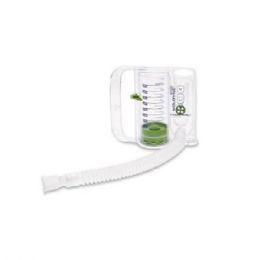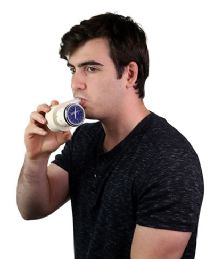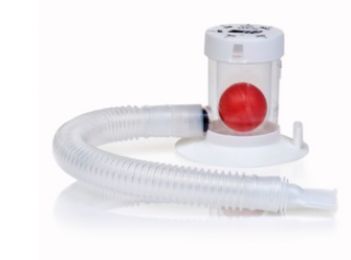
.jpg&newheight=260&quality=80)




Why is a Spirometer Used?
A spirometer is the main piece of medical equipment used for basic Pulmonary Function Tests (PFTs) to diagnose chronic obstructive pulmonary disease (COPD), asthma, bronchitis, emphysema, and other conditions that affect breathing. Besides ruling out lung diseases through the Pulmonary Function Tests, the spirometer is often used for finding the reason or cause of shortness of breath, to assess the effects of medication, to determine the effects of contaminates on lung functions or whether exposure to chemicals at work affect lung function, to check the lung function before a patient has surgery, and also to measure the progress in disease treatment.
How Does a Spirometer Work?
Taking place in a doctor’s office, a medical professional will ask the patient to take a deep breath and then blow out as hard and fast as the patient can into a mouthpiece of a spirometer. The spirometer will then be able to measure the total amount of the patient’s exhale, called the forced vital capacity (FVC), as well as the amount of the air exhaled in the first second, which is called the forced expiratory volume in one second (FEV1).
The adult male’s average total lung capacity is about 6 liters of air while a person with COPD will have an impeded flow rate, often lower compared to a normal healthy lung volume. A spirometer will also show that a person with COPD is not able to blow air out as fast as a healthy person, with the total amount of air released in the first second being a lower proportion than that of a healthy individual. With more people being affected by COPD every year, early detection and understanding the causes are becoming increasingly more important for public health.
What Are Different Types of Spirometers?
While a spirometer measures the volume of air inspired and expired by the lungs, and the ventilation movement of the air into and out of the lungs, there are other various types of spirometers that use different methods for measurement.
Incentive spirometer – This is used to help people to improve the functioning of their lungs. As users slowly breathe into the device and then hold their breath for 2-6 seconds, an indicator gauge tells them how their lungs are functioning by indicating a sustained inhalation vacuum. Often times this device will be used by patients who had surgery which might jeopardize respiratory function, and also by patients recovering from surgery that involved extended time under anesthesia, cardiac surgery or a prolonged in-bed recovery that allows little body movement and exercise. It can also be utilized to minimize the chance of fluid build-up in the lungs, and is even used by wind instrument musicians wanting to increase their air flow power.
Peak flow meter – This measures a person’s maximum speed of expiration, called either a peak expiratory flow (PEF) or peak expiratory flow rate (PEFR). Peak flow meters monitor a person’s ability to breathe out air, measuring the airflow through the bronchi. This helps determine the degree of any obstruction in the airways.
Pneumotachometer – Measures the flow rate of gases by identifying pressure differences across a fine mesh filter.
Windmill-type spirometer – Also known as a Spiropet spirometer, this device has rotating discs that help measure forced vital capacity without using water. This type is more lightweight and portable compared to a traditional water-tank type of spirometer, and it has a broad range of measurements that cover between 1000ml to 7000ml.
Tilt-compensated spirometer – This spirometer can be held horizontally when taking measurements, yet if the user leans too far forward or backwards, the spirometer’s 3D-tilt sensing device will compensate and indicate the user’s position.
Fully electronic spirometer – It can compute the airflow rate in a channel without the use or need of moving parts or meshes. By eliminating the resistance and momentum error associated with moving parts like those of the windmill or flow valve spirometers, the fully electronic spirometer can offer greater volume accuracy information to the medical professional and patient.
Hulet Smith, OT
Rehabmart Co-Founder & CEO
ws